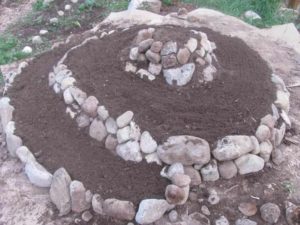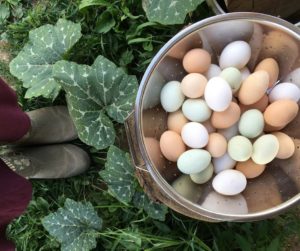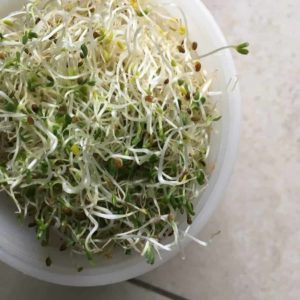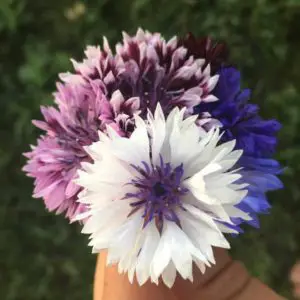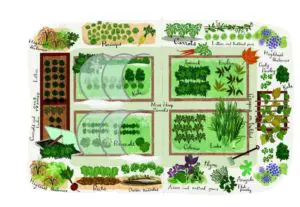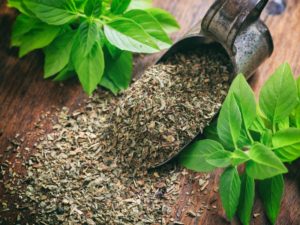Light pruning benefits dill and encourages healthy and more vigorous growth if you’re growing dill at home.
Trim dill leaves anytime after the plant reaches several inches in height, and repeat several times throughout the growing season until the seed stalk forms.
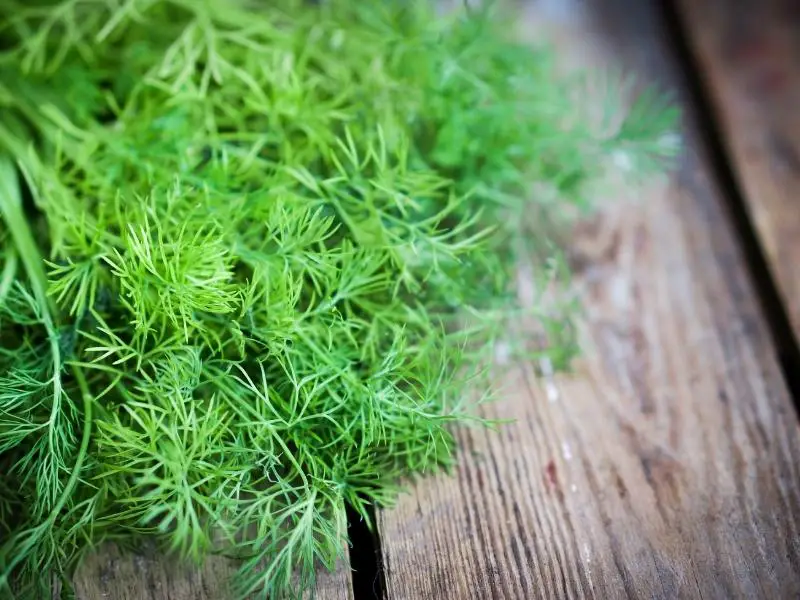
The pruning of dill is often referred to as trimming, clipping, snipping, or pinching. Trim dill by hand or use clean pruning shears or sharp scissors.
How to Prune a Dill Plant (Step-by-Step)
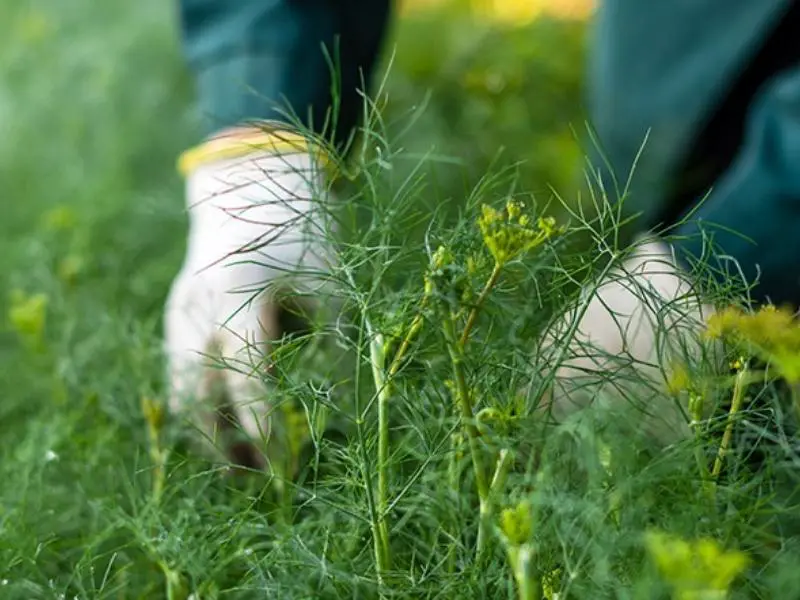
Here’s how to prune a dill plant:
Prune Leaves From the Top for Bushier Growth
Identify leaves growing closest to the top of the dill plant. A dill plant has many small stems, each with tiny fronds extending from the main branch. These little stems, or fronds, are the dill leaves.
Using shears or scissors, snip the leaves off the top of the plant. This will encourage the plant to grow outward rather than upward.
Trimming the leaves closest to the top helps the plant develop a bushier appearance.
Snip the Leaves at the Main Stem
When trimming dill, pluck the leaves at the juncture where they join the stem. This will encourage more leaves to grow below the cut, increasing the density of the dill plant.
Make Clean and Smooth Cuts
Use sharp, clean scissors or shears to avoid injuring the dill plant. Make smooth and clean cuts without leaving any stubs behind.
Clean and disinfect all pruning tools before trimming dill or any other plant.
This is a great way to prevent the spread of disease-causing pathogens in a garden. Household disinfectants such as chlorine bleach and ethanol are practical and readily available for cleaning garden tools.
Pinch Dill Throughout the Season
Pinch off small dill branches and harvest the plant while it’s green and growing. Use your fingers to lightly prune young dill plants, pinching off leaves growing near the top of the plant.
Young dill leaves are very tender and are easily pruned by hand. Pinching off leaves won’t injure the plant, as long as you don’t pull so hard as to yank the plant from the ground.
Trim No More Than One Third of the Dill Plant
Leave at least two thirds of the plant intact when pruning or harvesting dill. Cutting more than one third of the plant may damage dill and discourage the plant from growing further.
The goal of trimming is to leave enough leaves on the plant to absorb the sunlight it needs to perform photosynthesis, grow, and bloom.
Pinch off the Flowers to Prolong the Harvesting Season
Dill tastes the best just before the flowers form and bloom in midsummer. Pinch off the flowers as they come, to prolong the plant’s growing and harvesting season.
The flowers last around a week before they wane, and individual blooms turn into seeds. When dill plants produce seed, they slowly wither and die.
To prevent this from happening, prune away the stem where the flower’s branch joins another branch.
When to Prune Dill
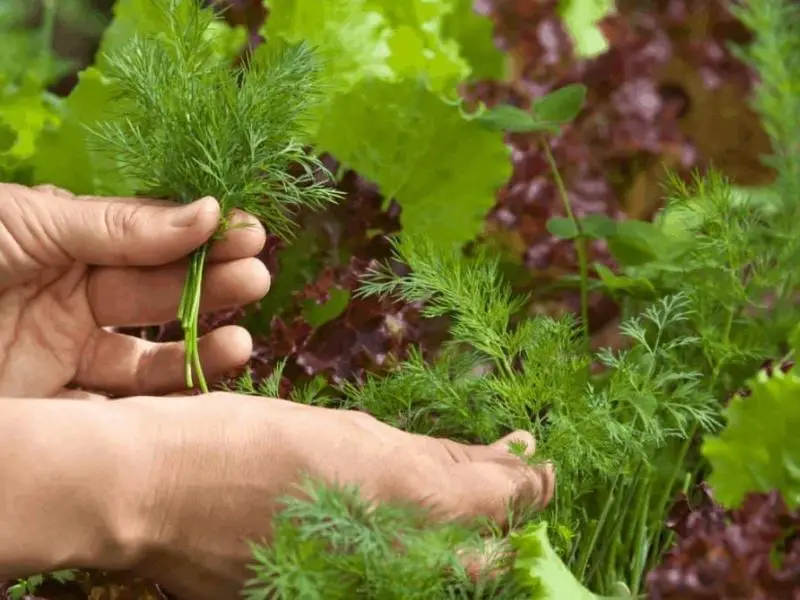
The best time to prune dill is when the plant has grown a few inches tall. Continually cutting the upper foliage will make the dill plants bushy and help delay flowering.
Prune or harvest dill any time during the growing season.
One way to prune dill is to snip a small number of dill fronds or several stems while the plant is still small. Another option is to wait until dill matures before pruning it heavily.
Dill reaches maturity and is ready for heavy trimming around eight weeks after the seeds are planted.
Why Trim a Dill Plant
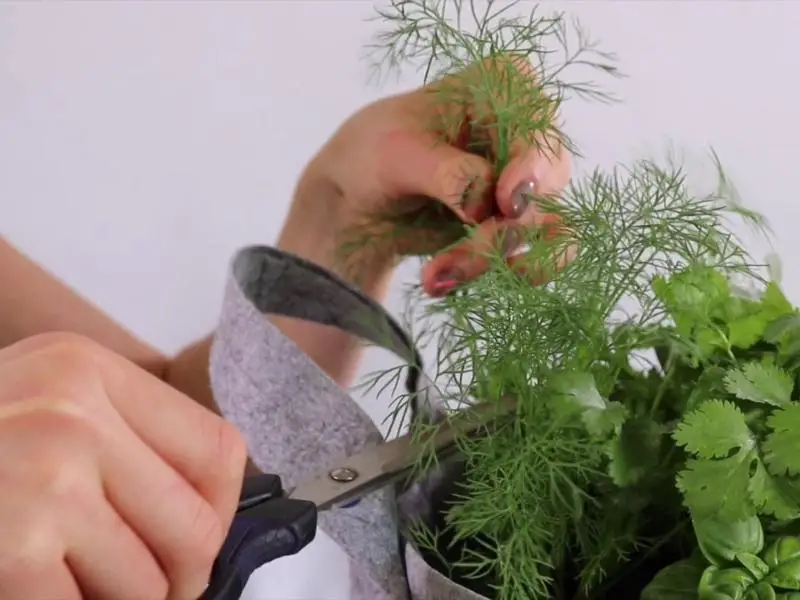
There are many reasons to prune a dill plant. The main reason is that this fast-growing, fragrant herb quickly lengthens, making the garden look unruly. The biggest benefits of pruning dill are:
Keeps the Plant Looking Tidy
Dill plants grow from 18 inches to 4 feet tall and take up a lot of vertical space. Lightly trimming a dill plant throughout the season encourages bushy growth and keeps the plant healthy.
No Need to Stake the Plants
Individual dill plants must be staked because they can grow very tall. When not tied or fastened to a stake, the dill’s hollow stems can be easily damaged or broken by wind, rain, or hail.
Trimming dill keeps the plant short and dense. This means the plant won’t need to be tied to a stake or fastened to any other type of support.
Prevents the Plant From Going to Seed Too Soon
Snipping back the foliage helps delay flowering. Inability to produce seeds keeps the dill plant productive longer.
While frequent and regular pruning postpones flowering, pruning can’t stop the plant from flowering completely.
Most dill plants will produce a flower stalk even with frequent trimming. This stalk will have a large flower umbel full of tiny yellow flowers.
Snipping off the flower stalk before the umbel forms encourages dill to continue producing foliage. This, in turn, prolongs the harvest of dill leaves.
To prevent the flower umbel from turning into seeds, use garden shears or scissors and cut it where the flower’s stem meets another branch.
Tips for Pruning Dill (How to Avoid Mistakes)
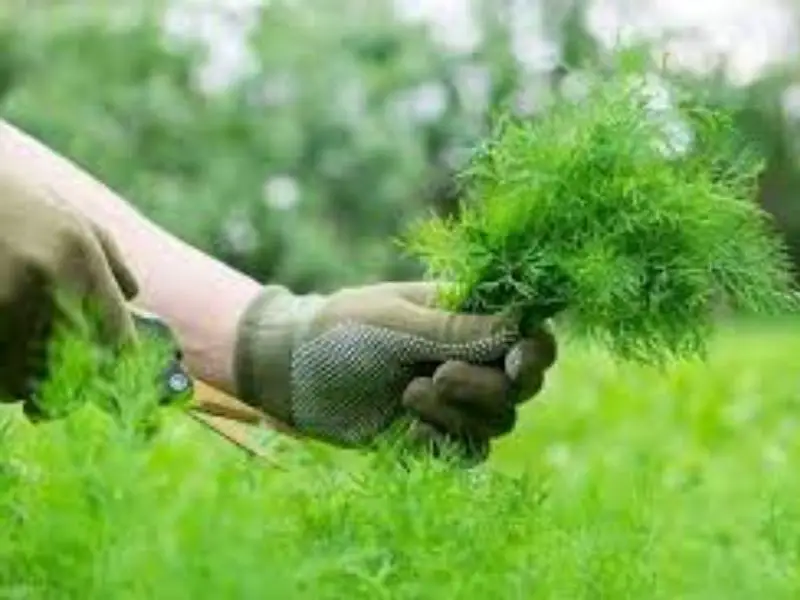
There are several ways to prune dill. Dill can be trimmed by removing the whole branches, pinching off leaf tips, or cutting the entire plant at the end of the season. Here are some tips for pruning dill the right way:
Cut Branches From Main Stem for Storing
Snip off branches from the main stem and store them in the fridge or freezer for your herbal uses. Find branches growing from the main stem at a straight angle and cut them using small shears.
Trim the shoot one inch above the joint to encourage new leaf growth.
Make 45-Degree Cuts
The best way to trim dill to encourage new growth is to make 45-degree cuts using sharp shears. Sharp gardening tools with thin blades make smooth and clean cuts without damaging the plant’s stems.
Using a dull blade to trim dill may damage the stems by causing them to dry rather than grow again.
Don’t Pull or Yank Dill While Trimming
Dill has fragile, hollow stems that may break easily if the plant is yanked or pulled. Pulling the plant to snap its branches off may cause irreparable damage, preventing dill from growing again.
When pruning dill by hand, use the other hand to hold the plant firmly in place to prevent damage and stunted growth.

